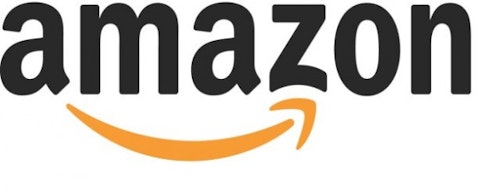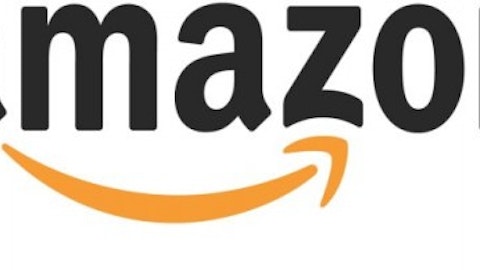The retail industry is rapidly changing as more people purchase goods through e-commerce platforms. In fact, the transformation is so fast that entrenched online retailer Amazon.com, Inc. (NASDAQ:AMZN) will soon be facing unprecedented competition from traditional retailers. For example, Wal-Mart Stores, Inc. (NYSE:WMT) and Costco Wholesale Corporation (NASDAQ:COST) are both dominant market players that continue to innovate and improve while generating investor value.
A lasting, competitive edge
Wal-Mart Stores, Inc. (NYSE:WMT)’s low-cost strategy, extensive distribution channels, and vast inventory management system are just some of its strengths that enable it to remain competitive. These strengths also help the king of retail boast remarkable margins compared to its competitors, especially online retailer Amazon.com, Inc. (NASDAQ:AMZN).

To be fair, though, Amazon.com, Inc. (NASDAQ:AMZN)’s CEO Jeff Bezos focuses more on free cash flow per share, not margins. Bezos believes that free cash flow is “something investors can spend” and that Amazon must continue to focus on growth, not profitability. Additionally, because Amazon.com, Inc. (NASDAQ:AMZN) is engaged in cost-intensive developments within its cloud computing and mobile business segments, where it competes against giants like Microsoft and Google Inc (NASDAQ:GOOG), its margins are negatively affected. As seen by the below graph, though, Amazon.com, Inc. (NASDAQ:AMZN)’s free cash flow position is unfavorable compared to other retailers.
AMZN Free Cash Flow data by YCharts
Costco Wholesale Corporation (NASDAQ:COST) is also a noteworthy opponent, in part due to its business model. Costco charges store membership fees, similar to Wal-Mart Stores, Inc. (NYSE:WMT)’s Sam’s Club, and then sells its products at large discounts compared to retailers like Target Corporation (NYSE:TGT). The membership fee comprises around 2% of Costco’s total sales; however, it makes up about 75% of Costco’s operating income. As a result, Costco Wholesale Corporation (NASDAQ:COST) generates a large cash balance that directly increases the bottom line and can help it weather market fluctuations.
The e-commerce boom will help generate profits
According tomarket research firm, U.S. online retail sales will grow at a compound annual growth rate of 10% through 2017 while the European market will grow at 10.5% through 2017. Wal-Mart is positioning itself for the long haul by entering this growing market. For example, itsInnovation Laband e-commerce division are already in pursuit of narrowing the gap with Amazon.com, Inc. (NASDAQ:AMZN) by building a custom e-commerce platform. In addition to new warehouses, Wal-Mart will likely utilize its existing stores and distribution centers to forward products to customers. Though executivesrecognizethe logistical obstacles of such a daunting task, they look forward to the growth opportunities that will result from the project.
As stated by Wal-Mart’s CEO Michael Duke in the company’s first quarternews release, Wal-Mart’s e-commerce sales grew nearly 30% from the same time the prior year. And, it continues to invest in the growing division. So, while its 2012 online sales were only $7.7 billion compared to Amazon’s $61 billion, Wal-Mart may be poised to compete with the online retailer more directly as its new platform is rolled out across America and then the globe.
Costco is also ramping up its e-commerce platform. According to Chinese news sources, the firm is pursuing potential partners in China so it can open a Chinese e-commerce division. In the first quarter, it increased its online sales by 20%, and the company anticipates further growth in the online sector. Also, 80%-90% of Costco’s online offerings are not sold in stores; therefore, many of the company’s online sales will supplement, not cannibalize, its brick and mortar sales.
Target Corporation (NYSE:TGT) is scurrying to enter the picture, too. In May, Target Corporation (NYSE:TGT) announced that it opened a Technology Innovation Center in Silicon Valley so that it could expand into the mobile application, online search, social media, and e-commerce markets. The office is a hub for Target’s e-commerce initiatives and, though value has not been immediately experienced, executives hope that it will spur the company to grow in an increasingly competitive industry.
Conclusion
Over the long term, companies with sustainable advantages, large economies of scale, and healthy cash balances generate value for investors. In addition, though, both Wal-Mart and Costco continue to innovate and improve their business operations and processes. Moving forward, Amazon.com, Inc. (NASDAQ:AMZN) must beware of the large low-cost giants.
The article 2 Impressing Retailers That Are Encroaching on Amazon’s Space originally appeared on Fool.com and is written by Brendan Marasco.
Brendan Marasco has no position in any stocks mentioned. The Motley Fool recommends Amazon.com and Costco Wholesale. The Motley Fool owns shares of Amazon.com and Costco Wholesale. Brendan is a member of The Motley Fool Blog Network — entries represent the personal opinion of the blogger and are not formally edited.
Copyright © 1995 – 2013 The Motley Fool, LLC. All rights reserved. The Motley Fool has a disclosure policy.






